 Back to selection
Back to selection
These Are a Few of My Favorite Things: New York Film Festival I
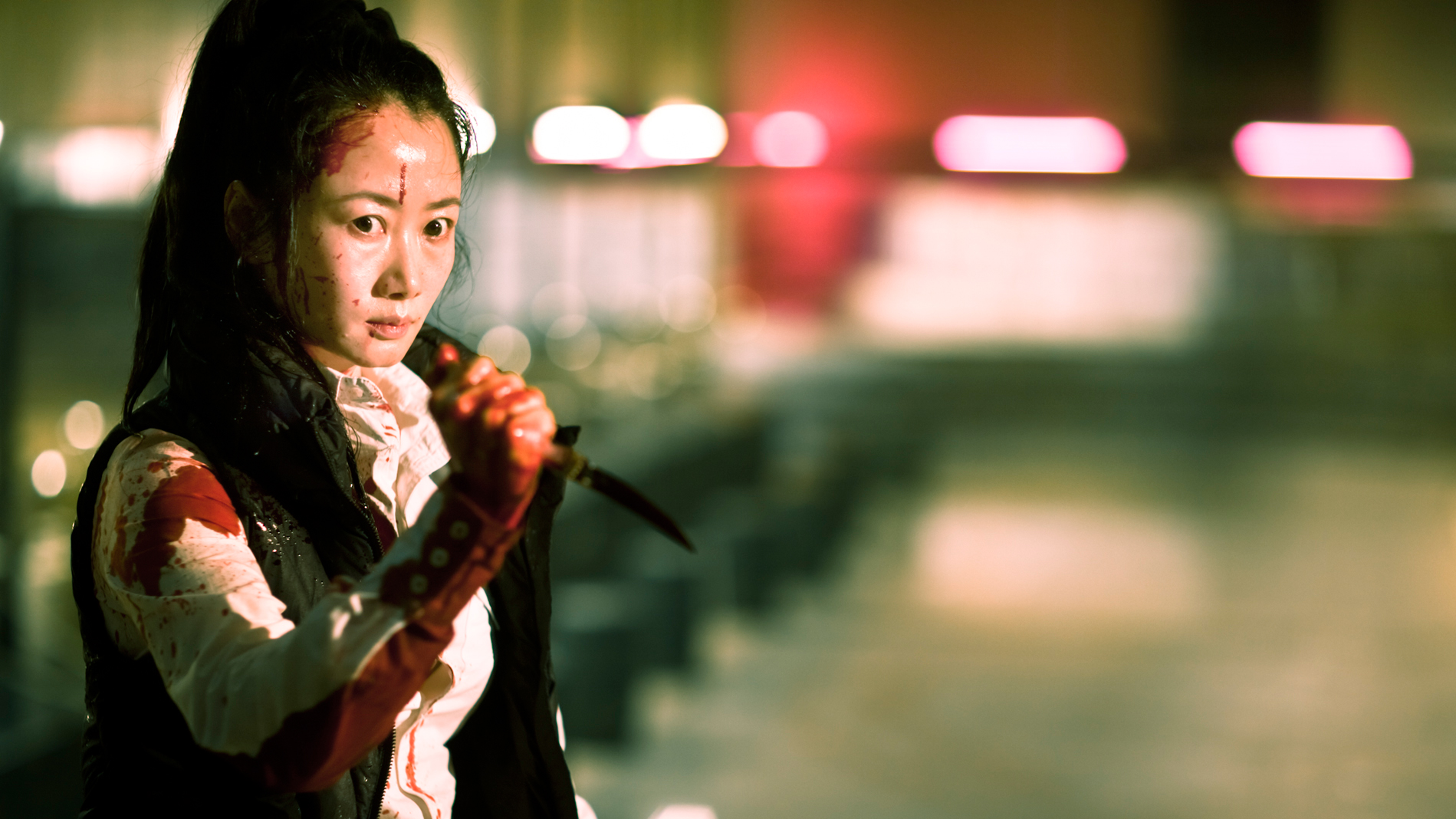
I have both good and bad news about the New York Film Festival (September 27-October 13).
First, the good news: For the most part, the films in this impressive, carefully balanced program are very good.
And the bad: The fest has become so expansive that quantity just may overshadow quality.
A bright, high-energy, and well-regarded expert in all things cinema, Kent Jones debuts as head of the NYFF. For the first time in its 51 years, the composition of the selection committee has been, wisely, revised. Traditionally it was guided by the fest director, always a professional programmer, but rounded out with full-time critics, generally five sometimes chosen for the prestige of their publications. Their strong convictions resulted in diplomatic trade-offs and inclusion of some mediocre titles that all could agree upon.
In the new set-up, the members are affiliated year-round with the Film Society of Lincoln Center, which produces the event. None is a full-time reviewer in the media. While the best critics evaluate movies according to their taste and knowledge and stamp them with their imprimatur, good programmers are typically more generous, taking into account what an audience will be exposed to as much as their personal opinions.
The Main Slate is comprised of 35 features (I’m writing about the ones I recommend from those I’ve seen), termed the Official Selection; four programs of shorts; two mini-retrospectives entitled Emerging Artists (the U.K.’s Joanna Hogg, Fernando Eimbcke from Mexico); for the second time, gala tributes (Cate Blanchett and Ralph Fiennes); and a couple of special screenings. In addition, we have the other annual strands: Views From the Avant-Garde, Directors Dialogues, and Convergence (panels and screenings geared toward new technologies), as well as three new sections: Spotlight on Documentary, Revivals, and Retrospective (Jean-Luc Godard this go-round).
I am certain that Jones and his fellow committee members will insure that artfulness trumps star wattage. I mean, personality galas during the festival? Manna for donors and sponsors, they are extraneous to the frequently demanding new works that signify festival. And the Official Selection is weighed down by three big studio films: Paul Greengrass’s Captain Phillips, with Tom Hanks; Ben Stiller’s The Secret Life of Walter Mitty, starring himself; and Spike Jonze’s Her, featuring Joaquin Phoenix — opening night, centerpiece, and closing night, respectively.
Below are eight films from the first week, listed chronologically by screening date, that are well worth shelling out for. Next week I’ll write about recommendations from the second.
A Touch of Sin, Jia Zhang-ke, China
“Shooting guns isn’t boring,” Zhao San (Wang Baoqiang) tells his wife in the most recent film by Jia Zhang-ke (Still Life, The World), arguably China’s best known contemporary director. On his motorcycle returning home through the mountains to Chongqing for his mother’s 70th birthday, the migrant worker fires his pistol, right on the mark, at three would-be highway robbers. He uses it again on home turf in a climactic scene. Zhao San is the main character in the film’s second of four stories, each set in a different region of China. The four leads intersect only slightly but do share an impulse: Frustration drives them to spontaneous acts of violence.
The lethal scenes are beautiful, grotesquely so, and each is unique. The placidity that masks despair in some of the director’s earlier films is lacking here. It is telling that the English title is a tribute to A Touch of Zen (1971), King Hu’s Taiwanese martial-arts classic.
In the first section, Dahai (Zhang Wu) is a retired miner in Shanxi province who rails unsuccessfully against the former village leaders who profited from privatization. He did not benefit from the radical transformation — typical of many in Jia Zhang-ke’s body of work, in which economic disparity is rampant. A beating with a golf club at the order of the visiting nouveau riche ex-chief tests Dahai’s restraint. His shocking shooting spree is convincing and elegant in a Sergio Leone western kind of way.
The third story finds Xiao Yu (Zhao Tao, Jia Zhang-ke’s wife and muse; see photo above) making justified demands on her cowardly married lover when he visits her in Wubei province. While she is on duty as a receptionist at a sauna, a wealthy customer makes unwanted sexual advances. She offs him with the fruit knife her boyfriend gave her. The act is almost an extension of her impatience with her main man. Male abuse takes many forms.
In the last segment, violence turns inward. Another migrant worker, Xiao Hui (first-timer Luo Lanshan), flees several menial jobs, eventually becoming a tuxedoed valet (and possibly more) in a brothel in industrial Dongguan. (A parade for clients by young women in sexualized military outfits is priceless.) He becomes mutually enamored of a sweet prostitute, but after witnessing her servicing a john, he takes off once again. The pressure from his mother to send more money is the last straw for the naïve teen.
As usual, the filmmaker digresses. The camera focuses on sites and events not absolutely essential to the main plots. We also have the obligatory performance. Xiao Yu watches an outdoor staging of a musical in which the heroine undergoes an ordeal mirroring her own.
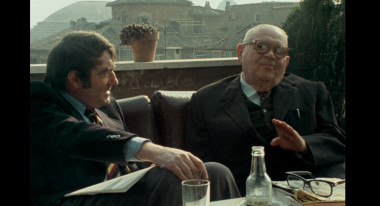
The Last of the Unjust, Claude Lanzmann, France/Austria
He knew Eichmann well enough to refute Hannah Arendt’s widely accepted theory of the banality of evil. In fact, Eichmann was “a monster, a demon,” according to Benjamin Murmelstein, who had worked for the Nazi leader and architect of the Final Solution as an emigration bureaucrat in his hometown of Vienna, then as the third and last Elder, the “king of the Jews,” in the “model city” of Theresienstadt, in reality a large concentration camp in Bohemia. Murmelstein had been a rabbi at Vienna’s largest synagogue. By the time Lanzmann found him in Rome in 1975 he had been declared innocent of collaboration at a trial in Czechoslovakia and had endured the smearing of his reputation by Jews who considered him cruel and treacherous. Israel gave him a hard time.
In footage originally intended for his landmark Shoah, Lanzmann interviews Murmelstein at length on a balcony outside his apartment and indoors as well. The encounters are never boring: The subject is smart and intense, has a way with metaphor and analogy, and possesses a phenomenal memory. A Truman Capote-lookalike, with an ingratiating lisp, he portrays himself as a “puppet who pulled his own strings,” a “practical” leader who worked both sides in order to save Jews from extinction and the camp from demolition.
He has been misunderstood, he maintains. To make certain that everyone became vaccinated during a typhus epidemic — many inmates turned down the shots — he cut rations for those who refused to comply. The disease disappeared, but many accused him of starving them. He “embellished” the camp to keep it from being razed — the Nazis used it as an example of the Jews’ decent quality of life — but many considered it working with the enemy. He says without shame, “The Jews were martyrs, but not saints.” By the time he completes the interview sessions, we have become convinced that his versions are correct.
Updating the footage, Lanzmann cuts away to long sequences of empty facades and train stations in villages and cities where inhuman events had taken place; we must imagine them, and often Murmelstein speaks in voiceover. In some sequences, Lanzmann shifts the topic, telling the history of the Jews in a particular place prior to and during the Holocaust.
Lanzmann is a didact. Murmelstein frequently refers to his own life as a Sheherezade-like “story,” and, in the crevices of the interview, the director builds the histories he relays into a mega-story, built around the spots which his subject talks about and which he films.

Le Week-End, Roger Michell, U.K.
You might consider this Michell-Hanif Kureishi collaboration a mature version of the Linklater films with Julie Delpy and Ethan Hawke, with Mike Leigh’s wit and crit and Woody Allen’s humorous neuroses as added value. The U.K. seems to be a haven these days for dialogue-driven couples’ films. This gem qualifies as a chamber play, but a special one.
Veteran British actors Jim Broadbent and Lindsay Duncan portray Nick and Meg Burrows, a 60-ish couple celebrating their 30th anniversary in Paris in an effort to replicate a memorable honeymoon. We know that a repeat of their youthful coupling is not going to work out when, upon arrival, Meg rejects their old hotel room, now painted a dreaded beige. She is never satisfied, and the accommodating Nick tires of giving in.
Unfortunately, relocating to a deluxe hotel is only the beginning of a spending binge they can ill afford. He has just been forced into early retirement by his university in Birmingham on account of a female student’s complaints about a flippant comment he made, and Meg’s salary as a schoolteacher will hardly cover their expenses. They occasionally behave like kids, like when they walk, or in fact run, the check in a posh restaurant. In fact, they have fun when they are not arguing. Playing with cliché, Michell films an enticing Paris — the score is jazzy, they visit places of high culture — a suitable backdrop for their unending clashes. The movie appears to be in part a homage to the French New Wave.
The climax of their trip, and the film, is a dinner hosted by the overbearing Morgan (Jeff Goldblum), an American expat who had attended Cambridge with Nick many years before, and whom they run into by chance on the street. Meg seems ripe for a liaison with a stranger she meets there, whereas the only person Nick bonds with is Morgan’s preteen son. (“Love is the only interesting thing,” he tells the boy.) The disjoint and loads of wine fuel a succession of after-dinner toasts that are more intimate confessionals than salutes. Nick is at his most self-deprecating, but Meg unexpectedly opens up about the intensity of her love. They succeed in pushing pushy host Morgan out of the picture at his own party.
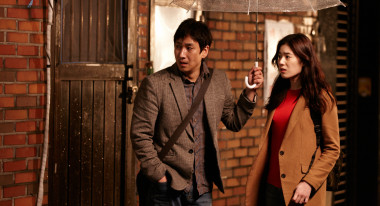
Nobody’s Daughter Haewon, Hong Sang-soo, South Korea
Once again Hong Sang-soo (In Another Country, Woman Is the Future of Man) provides us with a self-absorbed, selfish, but somehow lovable film director. Seong-jun is played by hangdog-eyed Lee Sun-kyung. The center of the film, however, is the titular character, acting student Haewon (Jeong Eun-chae), a tall dazzler with whom the married teacher had had an affair. The word “strong” keeps popping up, from her and about her. She earns the distinction by putting up with Seong-jun’s endless emotional baggage.
Although the film begins with a tearful goodbye to her mother, who is moving to Canada, it shifts into a convoluted attempt at reconciliation after she calls him to compensate for her sadness. She is much younger than he, so has a more open, optimistic view of life. He is confused, arrhythmic. He wants it both ways, wife and baby as well as beautiful free spirit. His egotism knows no limits. He interprets, rather misinterprets, much of what she says as potential leakage about their liaison. In fact, he goes into a frenzy each time paranoia overcomes him. We never see his family, but the sight of him and Haewon taking long hikes around Namhan Fortress smacks of love. She has the patience of Job, but there is a limit.
There is a minimalist feel to this impeccably crafted movie. It is sparsely populated. In every scene the spotlight is on the characters involved and little more. The filmmaker repeats certain structuring motifs, like Haewon stepping on a cigarette butt just before looking over the merchandise at a used bookstore she is drawn to. Drinking scenes abound, but they could be more a function of culture than punctuation. The one unanticipated event is a chance encounter with another filmmaker, an older Korean man who lives in the U.S., but she is not ready to make a break with the troubled Seong-jun.
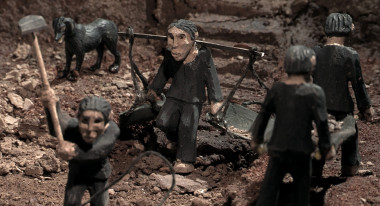
The Missing Picture, Rithy Panh, Cambodia
After making several documentaries about the suffering in Cambodia, renamed Campuchea under the Khmer Rouge (1975-79), Panh (The Rice People, S-21: The Khmer Rouge Killing Machine) has chosen a novel approach to engaging, and educating, the viewer. Once again he uses archival footage, including rare surviving scenes from a propaganda film made during that era, but he interweaves it with contemporary shots of the country today and, most inventively, hand-painted clay dolls by Sarith Mang, which stand in for victims and perpetrators. These distancing devices provoke the spectator, and work in tandem with his voiced-over tales (actually spoken by Randal Douc) about his family before they were sent to a rural reeducation camp and during their fatal stay there. The nostalgia brought on by intimate photos of their bourgeois life in Phnom Penh before deportation is infectious.
Panh illustrates the huge disconnect between the ideal collective proletarian paradise (based on Mao and Rousseau) that the Khmer Rouge envisioned and the reality of life inside the camps, where most people, given but a meager amount of rice daily, died of hunger and disease. “A spade is your pen,” their propaganda machine declared, and it does appear that most of the work entailed digging dirt and hauling rocks. The Khmer Rouge leaders rejected western medicine and automobiles as colonialist. They (especially leader Pol Pot) considered themselves pure, but behind the false front lay brutal tactics.
Hunger is the most frequent topic in the camps, death ever present. The clay figures have expressive faces, and the sick and dying really do appear ill and fading. The voice-over speaks about the brainwashed children who constitute the front lines, telling one horrifying story about a nine-year-old boy who denounces his mother, which leads to a death sentence.
The contrasting footage of Phnom Penh before and during the rule of the Khmer Rouge conveys what words can not describe: A once vibrant large city became totally deserted. The title points to Panh’s belief that available images do not reveal the awful truth, that those capable of doing so are “missing.”
Not to be forgotten is that the ascendancy of the Khmer Rouge followed the extensive bombing of the country by the U.S.
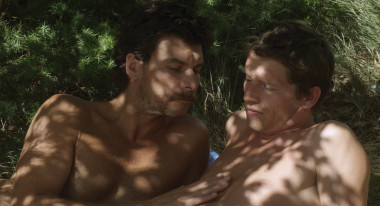
Stranger by the Lake, Alain Guiraudie, France
In this inspired minimalist masterpiece, the gay men who lie nude on an isolated sandy beach in rural France and play libidinal games in the adjacent forest chat jokingly about a mythic sea monster inhabiting the depths of the tranquil lake they face and occasionally dip into. The danger in this bucolic setting turns out not to be below but on the surface, embodied in the form of swarthy Michel (Christophe Paou), mustachioed in ‘70s Castro Street style, who does countless laps when he’s not servicing or being serviced in the woods.
Michel experiences a coup de foudre with fair, slim Franck (Pierre Deladonchamps), a sweet, unemployed vegetable seller and beach “regular.” An obstacle stands between them: Michel’s needy lover. While Franck is alone in the woods, he is watching through the branches the couple in the water when Michel suddenly drowns his partner and swims ashore. Smitten nonetheless, Franck says nothing and remains silent on the subject while commencing an affair with the now single killer.
Nearly everyday the two engage in hot explicit coupling, oral and anal, beneath the trees. Anonymous sex turns into a relationship based solely on carnal desire. Franck wants more, a drink, dinner, a night together, but Michel adamantly refuses, claiming they would tire of each other quickly. After the body is found and a local detective becomes a misfit of a fixture on the beach, Henri (Patrick D’Assumcao), a heavyset straight man Franck has befriended, suspects Michel and warns his new pal that he could be eliminated once the object of his obsession is over him. Without spoiling anything, let’s just say that the relaxed pace of the narrative comes to a head with a barrage of violent acts in a milieu that is supposed to be a safe escape hatch.
Guiraudie (The King of Escape, No Rest for the Brave) is ambivalent about the outdoor sex scene. In an era when gays are marrying and raising children in the “heteronormative” mold, he honors the age-old phenomenon with his no-holds-barred filming from every possible angle of typical encounters (with a wide physical demographic and some annoying intrusive older or unattractive men). The habitués of the cruising spot are clearly out of synch with the ideal of relationships currently in vogue among their brothers. Yet the narrative takes the frisson of fear built into public trysts to a cynical place.
The filmmaker and d.p. Claire Mathon hold shots of trees and sky so that allowable light signals time of day as well as mood. They film surrounding vegetation as much for commentary as for ambience. Light and shadow help define the characters, simple men whose conversations do not go beyond small talk and the realm of personal experience. Giraudie gets perfect naturalistic performances by his two nonprofessional leads.
Several times he and Mathon repeat a long shot of the parking lot, which offers clues to the mystery. The murder is relayed to strong effect by one protracted take from Franck’s point of view. Nathalie Vidal’s subtle sound design makes good use of nature’s music. The overall effect is sublime.
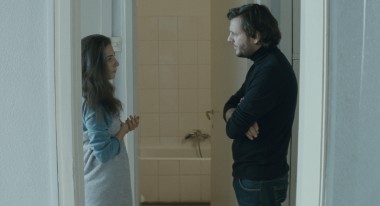
When Evening Falls on Bucharest or Metabolism, Corneliu Porumboiu, Romania/France
This could be one of the strangest films ever about the making of a movie, except that it is less about the process than it is about the unusual relationship between director and actress. Here it is not the lead in the film-within-the-film but a supporting actress who gets it on with the filmmaker, who decides to write a (probably gratuitous) nude scene for her. He is something of a bully, a manipulator and a liar, so for her toughness is a requisite asset. Convincing and rehearsing her takes up more than a third of When Evening Falls‘ running time.
Paul (Bogdan Dumitrache) is the Bucharest-based director. Alina (Diana Avramut) is the confident young woman from the provinces who stays with other cast and crew in a hotel. Only once do we see more than a small section of its lobby, but never cast or crew, save for the harried production manager who has to clean up his messes. Porumboiu (12:08 East of Bucharest; Police, Adjective) maintains this fragmentary approach throughout. There are no establishing shots introducing us to the restaurants where they dine or the kitchen in his apartment where they sit and negotiate. The spaces are just like the partial constructions on an actual film set. We see pieces, not the whole.
Porumboiu does the same with time. He shoots on 35mm, as does Paul in the movie’s film. When Evening Falls is consistent in its parallels. Paul, in reality speaking for the filmmaker, explains to Alina the history of 35mm, that a roll of film is 11 minutes long and that has historically determined the maximum length of a shot. In fact, he has so absorbed the conventional sense of cinematic time that he will not use digital, for which there is no temporal limit.
The takes are exceedingly long in When Evening Falls, as are those in Paul’s film. The camera never moves. Breaking what little action exists are several lengthy scenes shot from the back seat of Paul’s car, Alina occupying the passenger seat. The long takes suit the subject matter as well as the characters. Paul has the space to philosophize incessantly and annoyingly. A Chinese restaurant (a cobbled-together small chunk of it) is the site of a lengthy discussion on human progress measured by eating utensils: chopsticks, knife and fork, or hands.
Porumboiu doesn’t intend for any of this to be taken seriously: He is a master of absurdist humor. Undoubtedly he had a good time making the movie — even if the use of “metabolism” in the title just might refer to Paul’s history of ulcers.
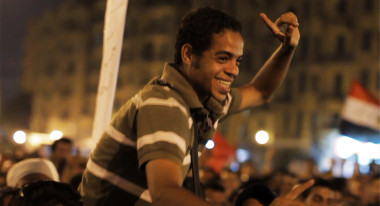
The Square, Jehane Noujaim, U.S./Egypt
Jog to the box office: Unfortunately, this model doc screens only once, the evening of October 3.
After the first big protest in January 2011 in Cairo’s Tahrir Square — the inclusive one that demanded the end of the 30-year reign of the dictator Mubarak — several excellent docs came out that captured the moment with their own specific styles. Noujaim (Control Room, startup.com) has updated that huge, spontaneous eruption by presenting it alongside the two large demonstrations that followed on the same spot with more specific agendas.
She and cinematographer Muhammad Hamdy capture the spectacular beauty of Cairo by night and, for the first gathering, use overhead shots to highlight the cohesion that would begin to unravel by the time of the second. She takes on a complex subject with thousands of participants by visiting and revisiting four different people throughout. The Square is unapologetically partisan, though she does a few gratuitous interviews with some blatantly obnoxious military and government officials.
Most beloved by the camera is charismatic young Ahmed Hassan. He is an unpretentious, streetwise bundle of energy well informed on the issues and able to debate them with ferocious intensity. The intellectual voice is handsome, classy actor Khalid Abdalla (The Kite Runner), who speaks the Queen’s English and whose relaxed academic manner complements Hassan’s. He comes from a long line of activists — he gets advice from his father via Skype — and feels that the time is ripe for applying new technologies to the cause.
Long-bearded family man Magdy Ashour is a member of the Muslim Brotherhood who befriends the other interviewees during the first demonstration. He faces a bind once it is revealed that the second protest, a result of the military’s stalling on holding civilian elections as promised, was energized by the secret collaboration of the military with the Brotherhood, which made the pact in an effort to seize power.
The fourth interviewee is Rami Essam, the “singer of the revolution,” who plays guitar night and day for the exhausted folks occupying the square. The most brutal sequence in the film is one in which Essam recounts his arrest and capture by soldiers. He takes off his shirt and shows us the multiple scars that prove it.
